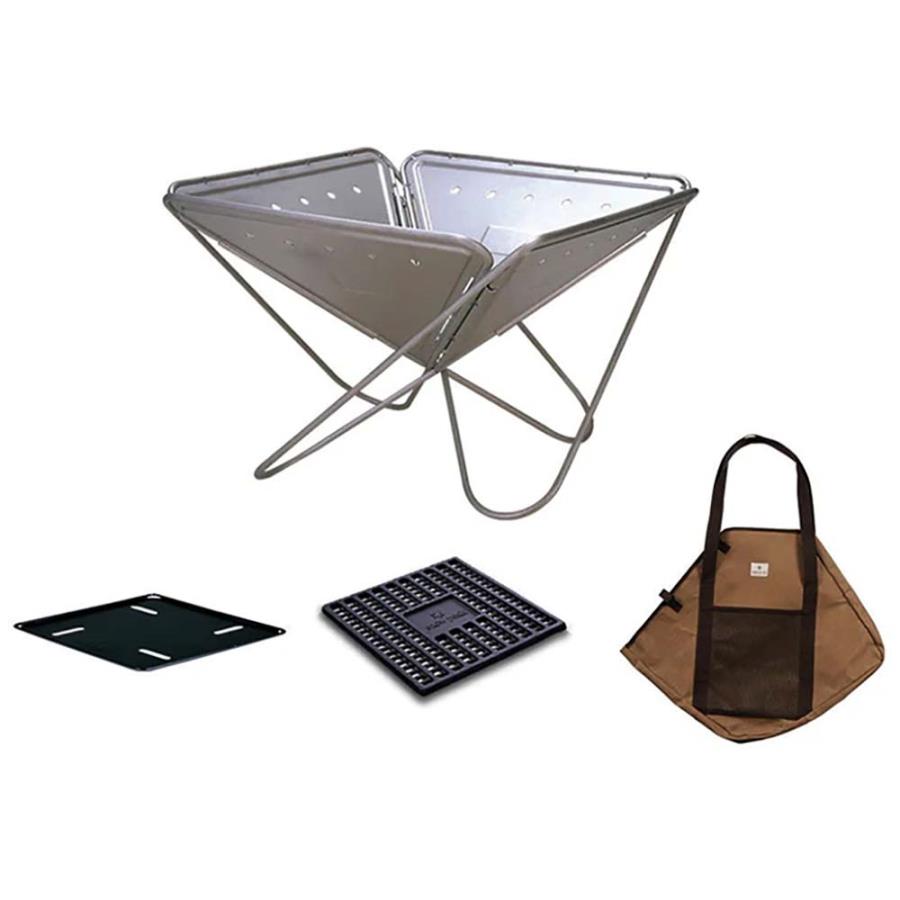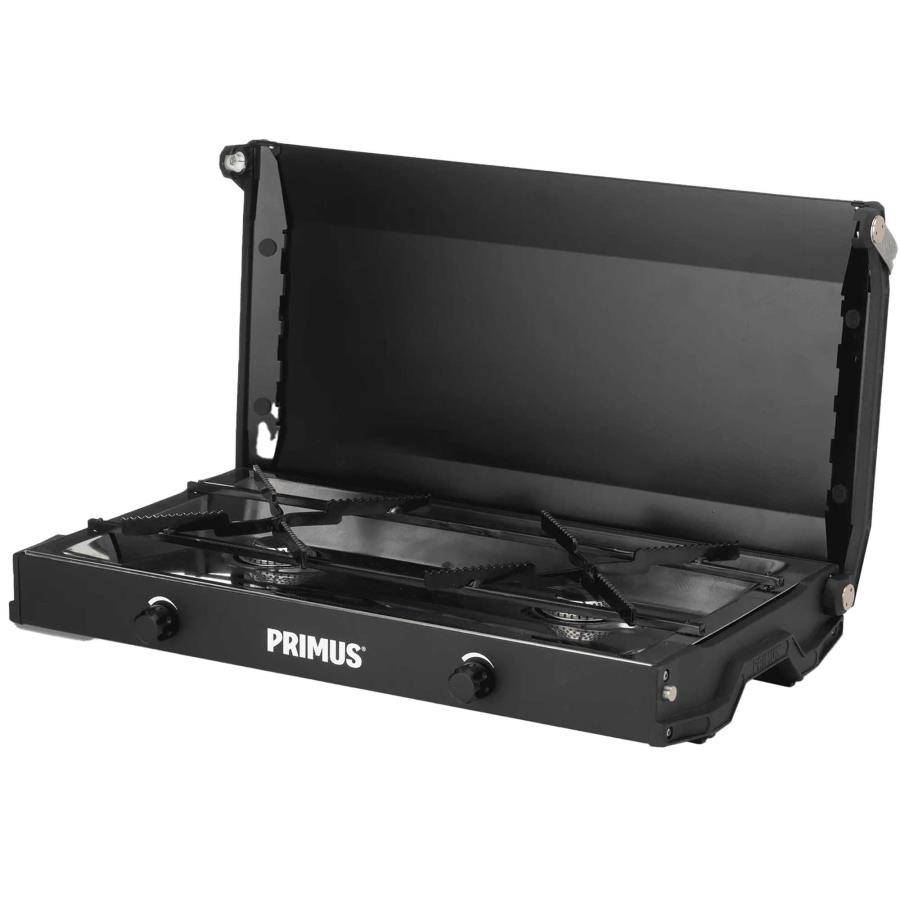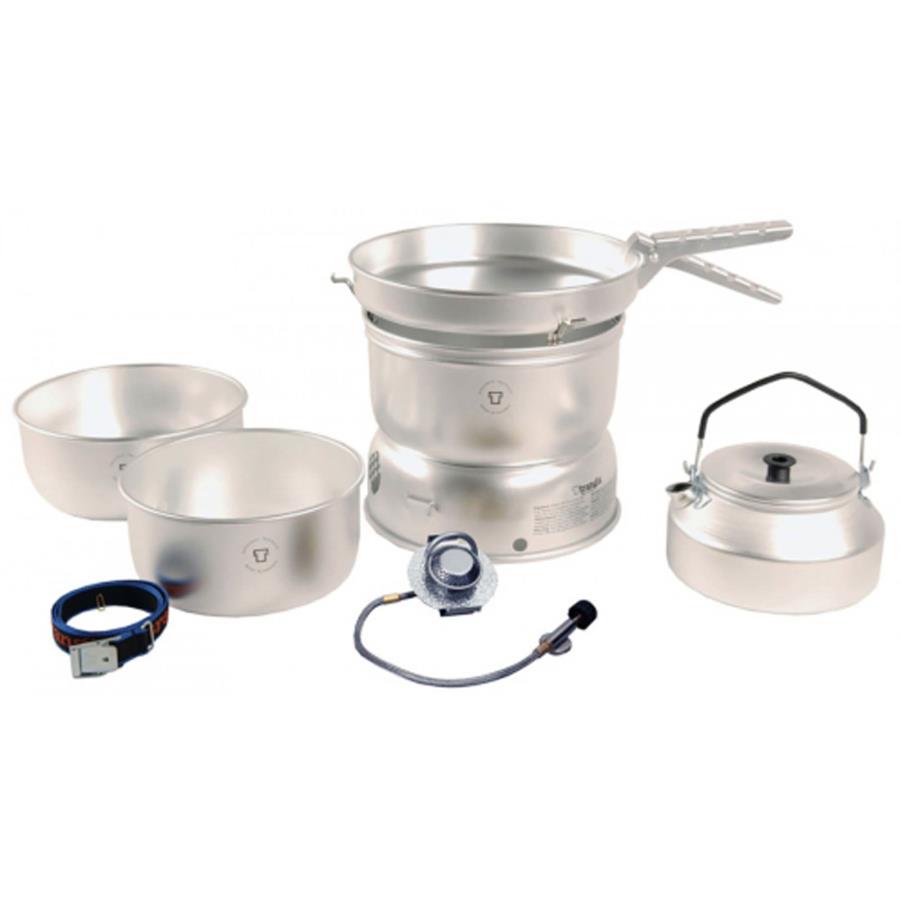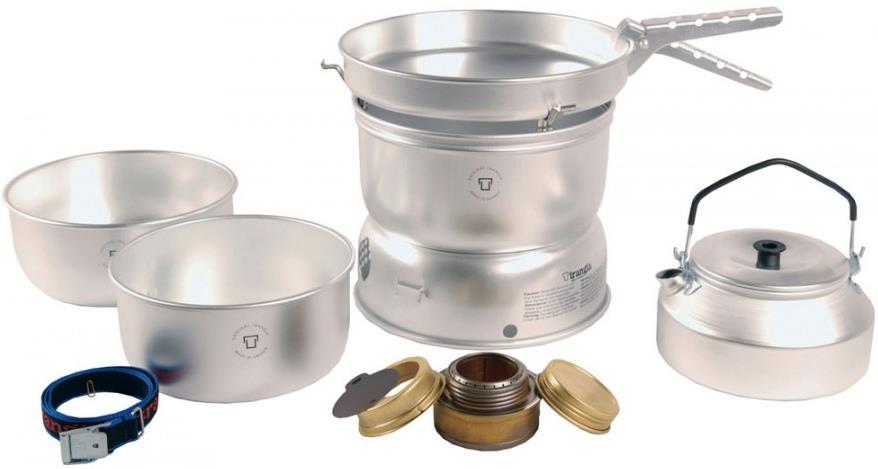How to Choose a Backpacking or Camping Stove
Lightweight multi-fuel burner or integrated canister stove? If you're unfamiliar with outdoor cooking then the choices can seem endless. This handy guide attempts to break down a few key concepts and give you an overview as to the types of stoves available to better help you make a decision.
What Type of Camping Stove should I choose?
One way to think about camping stoves is to divide them between their fuel types.
Canister stoves are the most commonly used for general camping and hiking. These run on a propane/butane single use canister, available in (depending on brand) 115g, 225g, and 450g volumes. Canister stoves are fine for most outdoor activities; from multi-day backpacking to afternoon fishing trips. For those venturing into more harsh or mountainous terrain it's worth noting that canister perfomance can be susceptible to cold temps and altitude.
Canister stoves are typically arranged in an upright design: fuel canister attached directly to a singler burner system with cookware stacked above. Fold-out pot supports generally feature as standard, with some offering options to upgrade for larger cookware. Single burner camping and backpacking stoves offer a versatile design that can be used with a wide range of cookware and allow you to build your own compact cooking set from a number of brands.
While suitable for most outdoor use, the upright design can make them more susceptible to wind which can reduce efficiency by using more fuel. The smaller footprint and stacked design can also make them top heavy and tricky to use in uneven terrain. Look for an additional fuel canister stand among our stove accessories for increased stability and to prevent knocks and spills.
.jpg)
Liquid fuel stoves have the benefit of greater versatility in that they can accept a wider range of fuels - such as white gas, kerosene and gasoline. Some systems such as the MSR WhisperLite offer a hybrid design that allows you switch between liquid and canister fuels for an even greater range of use. These types of stoves are often favoured for use in more extreme climates and altitudes, or where spare canister fuel may be hard to find.
These stoves use a remote system: a flexible hose that attaches from the fuel source to the stove. This allows a side-by-side set-up which reduces top-weighting and keeps the flame lower to the ground where it is less susceptible to wind. This is especially handy in challenging terrain where it can be hard to find level ground. Liquid fuel stoves feature fold out legs to be self-supporting and can take a wide range of cookware. Remote systems are great for hikers and trekkers travelling through hilly or alpine terrain.
.jpg)
A third option - one growing in popularity - is the woodburning stove (or alternative fuel stove). These are ideally suited to minimalist hikers and trekkers looking for a more traditional outdoors experience.
They have the advantages of a very low pack weight as you can forage fuel from the local area rather than carrying canister or liquids in your rucksack. See below for woodburning stove options.
.jpg)
While part of the canister stove range, these give you a compact, all-in-one heat-and-eat system. The stove unit 'locks' to an integrated cooking pot that doubles as a mug/bowl with an insulating koozie to aid heat retention and handling. The canister screws into the burner in the standard way with a stand (usually sold separately) providing support. A main advantage of this design is to shield the flame from the elements.
Aside from a safer design, this gives you greater efficiency for faster boil times - ideal for making soups and hot drinks, and well suited for fast moving treks and climbing trips. They work equally as well for those just looking to brew the occasional cuppa – great for anglers and day hikers.
On the flipside, they can require a specific size canister to fit, and can offer less choice on the accompanying cookware with limits placed in the volumes that can be heated. Great for solo trips or small groups but less ideal for longer stays and family camping breaks. The design can also make them somewhat top heavy and more prone to tipping so a canister stand or Hanging Kit are essential.
Several models are available, with differences in cup volume (individual vs. group cooking) and fuel regulation.
Some models are geared towards a ‘boil only’ function, boiling water quickly and efficiently but do not offer a way of regulating the flow of fuel. Boil only models are great for fast and light hikes where a quick tea or coffee is the goal, but not as suitable if meals require simmering or heating through.
.jpg)
A growing market for portable alternative-fuel stoves has emerged in the past few years – noticeably through humanitarian relief groups working to provide remote communities with more sustainable living conditions. These range from more technical stoves (and off-grid outdoor gear) such as those produced by BioLite to smaller, ultra-light backpacking woodburners from Solo.
The benefits of a wood burning stove rests in the ease with which you can find fuel from the surrounding area. Provided the location is suitable, you need not carry fuel until you’re ready to cook. A handful of twigs, sticks, pinecones or even pre-made pellets are all you need; and as long as these can be sourced on location then you’re never without fuel.
This makes for a lighter pack weight, is cheaper in the long-term to run, and reduces waste from discarded, single-use canisters. Most are designed to be smokeless, which is good news for the cook. The bases are constructed in such a way that the ground beneath isn’t scorched during use.
On the flipside, cook times will run a little longer and flame consistency will be more dependent on conditions and fuel. Designs vary, but most wood burning stoves are shaped to minimise wind affect. In wet conditions it may be tricky to find dry fuel and necessary to carry a small bundle of fuel to help get the fire started. Due to their nature some areas may prohibit their use during fire seasons.
Biolite take the design a step further, with models such as the CampStove which converts heat into electricity via a small thermoelectric generator, and uses it to power/charge site lights & smaller devices such as smartphones, action cameras and GPS devices - great for an extended base camp stay.
Simple to use and practical, alternative fuel stoves add a touch of traditional camp craft to your trip and can be a great way to spend the evening; cooking a well-earned meal over an open flame. For larger groups undertaking a longer trip they make a great lightweight backup stove.
.jpg)
What To Consider When Choosing A Camp Stove
Finding it tough to decide on a stove type? Consider the following points when making your decision:
While travelling by road gives you a far greater scope, those hiking or trekking will want to look for a lighter weight stove system with a compact design that can be easily be carried in a pack.
Nesting designs are favourable; with gas canister, utensils and burner stowing neatly in a cooking pot/mug. Lightweight trail systems such as the Crux Lite and Pocket Rocket 2 Mini are great for solo treks while larger systems such as the MSR Winderburner offer larger capacity cookware making them ideal for 2+ persons.
Alternative fuel stoves can be among the lightest as they require little to no fuel to be carried, although they can be restricted by location, climate and time frames.
Those looking for a more relaxing summer outdoors experience should check out the Kuchoma Grill from Primus. This portable gas barbecue runs on the same canister fuel as backpacking stoves and folds neatly into a suitcase style carry that makes it great for car touring and general camping.
.jpg)
Weather conditions and climate can greatly affect cooking times. As pre-pressurised liquefied gas becomes colder, internal pressure begins to drop. This results in a reduced flow of gas to the burner head which generates an inadequate flame for cooking and increases boil times. This will cost you precious fuel and cause delays to your itinerary.
Look for a stove that features added extras such as windshields; or those that feature an enclosed windproof design or concave burner head such as the Soto stove range. Remote stoves and integrated stove systems are designed to cope with harsher weather and climate.
A great canister stove for colder conditions is the Windmaster from Soto. Alongside actively reducing wind affect, this stove features a Micro Regulator System which works to maintain a consistent pressure.
This delivers the same boiling time down to -5C as it does at room temperature with half the time of other needle valve systems below that.
.jpg)
How much fuel shall I take? The answer is typically more than you think you'll need. Running out of gas halfway through boiling your morning brew can be a demoralising experience.
Most trail and camp stoves run on a propane/butane mix. Butane is a less toxic fuel and is capable of providing around 12% more energy than propane. The downsides are it struggles to be effective at temperatures below -2C whereas lighter Propane is effective at lower temps; all the way down to -42C.
For this reason the two are mixed to gain the advantages of both. Composition varies between brands which makes it hard to pin down an average run time. Study the spec/lowdown of each stove as most brands give you an idea of the average burn time you can expect from a certain fuel. Again, temperature, weather conditions and fuel composition can increase the amount of fuel required.
It pays to carefully plan your meals and practice with your stove in advance for a more precise understanding of its performance. If you're looking for more certainty then check out the Jetgauge from Jetboil. Though calibrated to Jetboil canisters, the similarities in weight across brands means it provides a strong indication of a canister's remaining fuel level no matter the brand.
For multi-day expeditions and travelling through remote areas it may be difficult to source specific fuel types. One option to consider is a woodburning stove. Boil times can be longer, but where natural fuel such as wood and pinecones are plentiful you need not worry about running out of fuel. The design keeps it simple and offers a more traditional bushcraft experience for less time-sensitive trips.
.jpg)
Altitude affects cooking performance. Higher elevations (anything over 2,000 feet) mean lower air pressure which lowers the boiling point of water. While gaining a faster boil time it means less heat requiring food to be cooked for longer and therefore requiring more fuel than at sea level.
The following strategy can be employed when calculating cook times at altitude:
For foods taking up to 20 minutes to cook at sea level - add 1 minute per every 1,000 feet of altitude, i.e. 15 minutes at sea level would be 18 minutes at 3,000ft.
For foods taking over 20 minutes to cook at sea level – add 2 minutes per every 1,000 feet of altitude, i.e. 25 minutes at sea level would be 31 minutes at 3,000ft.
.jpg)
Stove Performance: What's a BTU?
A stove’s performance can be measured in a number of ways. Though it can vary between brands, you’ll generally find a backpacking stove’s output rated in BTU/h (British Thermal Unit per hour) or Watts – sometimes both. A British Thermal Unit is the amount of heat required to raise the temperature of 1 pound of water by 1 degree Fahrenheit.
In the most basic sense, the higher the BTU/Watt output the more powerful the stove. Though as always, climate and altitude must be factored into overall performance. Backpacking and camping stoves range in output; typically falling anywhere between 3’000 to 12’000 BTU (for contrast, the average home stove will produce around 7000 BTU’s per burner, dependent on flame size).
A BTU or Watt measurement is a good indication of a stove’s design and capability, though many brands will provide a more practical understanding of performance by listing average boil times per litre of water and litres boiled per canister. Where these figures are available they will be listed in the lowdown section of each stove. This gives you a great way to compare and contrast between brands to find the ideal stove for your chosen activity.
.jpg)
Regulated vs. Non-Regulated
In simple terms a regulated system lets you control the flow of gas from the canister through the stove to the burner. A non-regulated stove provides a constant flame size. These systems are geared more towards ‘boil only’ systems – great for hot drinks and quick meals on the go.
For those requiring more control and versatility in their meals, a regulated stove system works best. This allows you to bring water to a boil before simmering or heat something slowly when required – much in the same way a home stove-top would function.
These are much better for multi-day adventures and family camping where more variety is needed.
.jpg)
Our Top Picks
Check out our full range of Stoves & Grills today!
Need further advice? We're here to help!
Check out our Buying Guides for technical tips and tricks.
Visit our Help Centre to speak to our experts.







